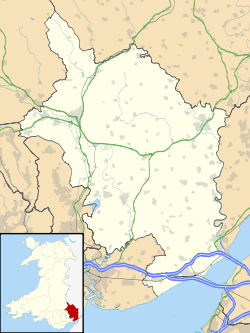Magor Marsh
| Magor Marsh Reserve | |
|---|---|
|
Magor Marsh Nature Reserve in mid-May | |
 Magor Marsh Magor Marsh Nature Reserve | |
| Type | Nature Reserve |
| Location | Monmouthshire |
| Nearest city | Magor |
| Coordinates | 51°34′34″N 2°49′37″W / 51.576°N 2.827°WCoordinates: 51°34′34″N 2°49′37″W / 51.576°N 2.827°W |
| Area | 36 hectares (0.360 km2; 0.139 sq mi) |
| Operated by | Gwent Wildlife Trust |
| Hiking trails | The Dragonfly Trail and The Butterfly Trail |
| Website | Gwent Wildlife Trust |
Magor Marsh is a 90 acres (36 ha) wetland reserve, located on the Welsh side of the Severn Estuary. It is managed by the Gwent Wildlife Trust. It has a great variety of habitats, including damp hay meadows, sedge fen, reedbed, scrub and wet woodland. There are also a large pond and numerous reens at the reserve.
Magor Marsh Nature Reserve is the richest site in Wales for wetland beetles and soldier-flies, and its pattern of drainage ditches and other features have remained unchanged since the 14th century.
Geology
The soil of Magor Marsh is mostly peat with a depth of around 15 feet. Under this is alluvium laid down in the river Severn estuary. The level of water must be kept near the surface to preserve the peat.[1]
Wildlife
Flora
There are two hay meadows in Magor Marsh. They are maintained using traditional methods. The meadows are grazed during autumn and winter. The hay crop is mown in mid-summer to provide winter feed. By late spring the fields are a mass of flowers.
In the meadows there are species like lady's smock, ragged robin, yellow flag, lesser spearwort and meadow thistle.
The common species in the reeds are teasels, common reed, hemp agrimony and purple loosestrife.
In the reen grow water horsetail, reedmace, marsh marigold and azure damselfly. Osier, crack willow and sallow are typical species in the wet woodland of Magor Marsh.[1]
Fauna
Magor Marsh includes breeding grounds for common redshank and common snipe. Reed warbler, grasshopper warbler, cetti's warbler, reed bunting and chiffchaff live also in the reeds of Magor Marsh.
In the reen the most common species are grass snake, great silver beetle, smooth newt and otter.[1]
In the pond of Magor Marsh the visitor may see water rail, coot, grey heron, little grebe, moorhen, little egret, Eurasian teal, shoveler and kingfisher.[1]
In the wet woodland the typical species are great spotted woodpecker and musk beetle. Cuckoo can be heard in the summer. In the meadows of Magor Marsh the common butterflies are orange tip and meadow brown.[1][1][2][3] [4]
European water vole can be found within the reserve.
References
Gallery of Magor Marsh photos
_by_Roger_Davies.jpg) Magor Marsh Nature Reserve
Magor Marsh Nature Reserve Swans on Christmas Day, 2005
Swans on Christmas Day, 2005 View along a drainage ditch looking south towards the River Severn
View along a drainage ditch looking south towards the River Severn Magor Marsh
Magor Marsh
